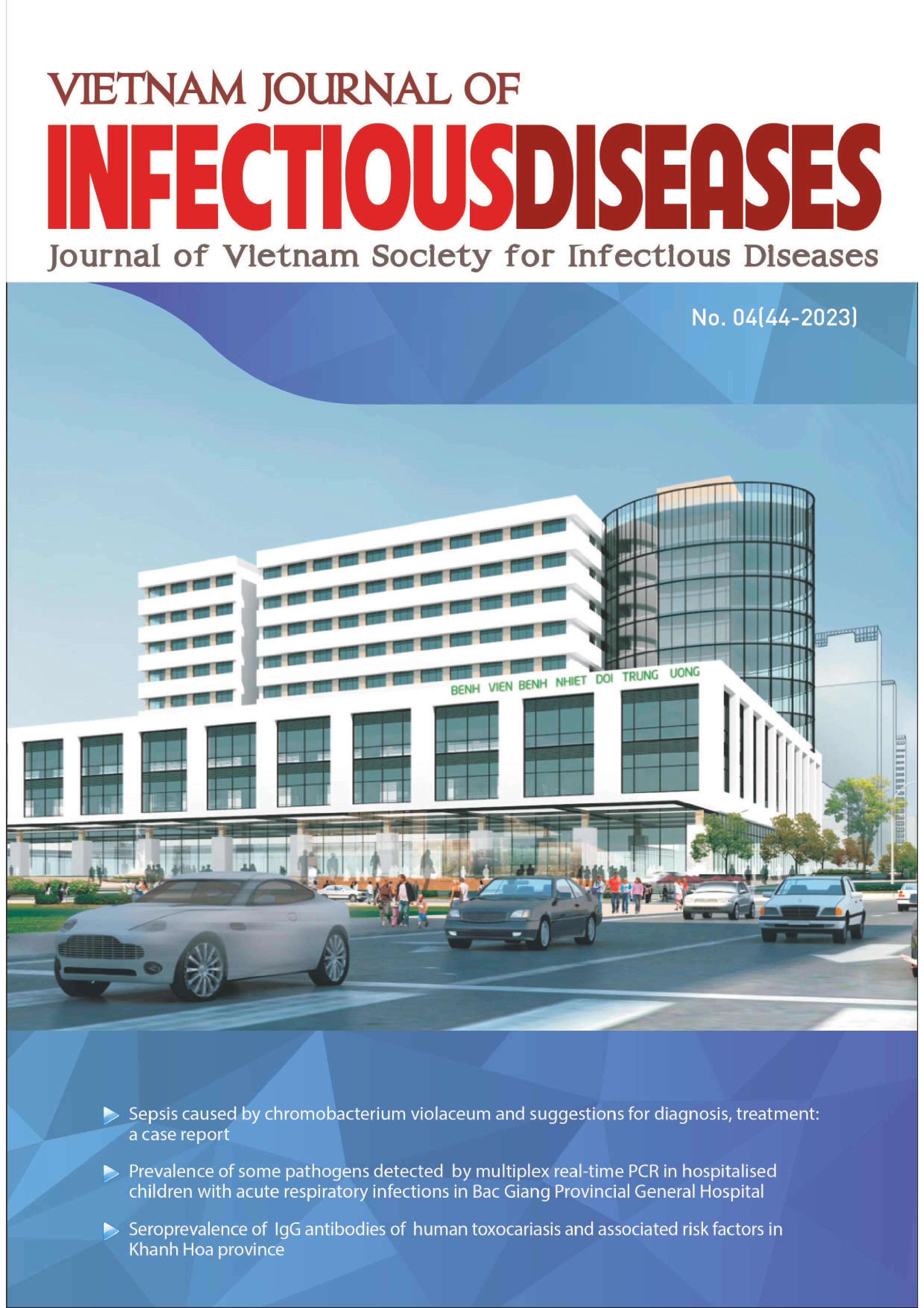SURVEY ON THE SITUATION OF GROUP B STREPTOCOCCUS INFECTION IN PREGNANT WOMEN OVER 35 WEEKS AT MEDLATEC GENERAL HOSPITAL
Nội dung chính của bài viết
Tóm tắt
Group B Streptococcus (GBS) is still considered as leading cause of early neonatal infections. Vertical transmission from mother to child may occur when a pregnant woman was infected with GBS in vaginal - rectum at the time of labor or the water breaks of delivery. Therefore, early screening for GBS in pregnant women over 35 weeks is essential to prevent neonatal infection due to GBS.
Objectives: 1) Determine the prevalence of GBS exposure in the vaginal rectum of pregnant women over 35 weeks using cultural and Realtime PCR techniques. 2) Evaluation of the sensitivity of the isolated GBS to antibiotics.
Subjects and methods: Prospective study in 243 pregnant women over 35 weeks who visited and/or had a culture test for Group B Streptococcus at Medlatec General Hospital. Samples of vaginal - rectum fluid were paralelly tested by 2 methods of culture and Realtime PCR. GBS-isolated strains were tested for their susceptibility to antibiotics.
Results: The rate of GBS infection in pregnant women over 35 weeks by culture method is 16.9%, Realtime PCR is 18.9%. The rate of group B Streptococcus sensitive to ampicillin, ceftriaxone, cefotaxime, vancomycin, linezolid are 100%; with levofloxacin at 95.0%, erythromycin at 29.0% and clindamycin at 25.0%.
Conclusions: The rate of Group B Streptococcus infection in pregnant women over 35 weeks as determined by culture method (16.9%), is lower than Realtime PCR (18.9%). Group B Streptococcus is sensitive to most of the first-line antibiotics such as penicillin, ampicillin, ceftriaxone, cefotaxime and is high resistance to erythromycin (68.4%) and clindamycin (72.5%).
Chi tiết bài viết
Từ khóa
GBS, Streptococcus, over 35 weeks, culture, Realtime PCR
Tài liệu tham khảo
2. Francois Watkins LK, McGee L, Schrag SJ, Beall B, Jain JH, Pondo T, et al. Epidemiology of Invasive Group B Streptococcal Infections Among Nonpregnant Adults in the United States, 2008-2016. JAMA Intern Med [In-ternet]. 2019 Apr 1 [cited 2020 Feb 25];179(4):479. Avail - able.
3. Tran Bich Ngoc, Nguyen Ngoc Yen Trinh, Nguyen Thi Truc Anh (2022). Infection rate and antibiotic sensitivity characteristics of group B Streptococcus in 35-37 weeks pregnant women visiting Thuan Kieu general clinic. Ho Chi Minh City Medical Journal. Volume 26, number 1, pages 362-366.
4. Nguyen Thi Them (2017). Research on vaginal group B Streptococcus infection in pregnant women in the last 3 months at Bach Mai Hospital. Master's thesis in medicine, Hanoi Medical University.
5. Tran Quang Hiep (2011), Research on some characteristics of vaginitis caused by Streptococcus B infection in pregnant women examined and treated at the obstetrics department of Bach Mai Hospital. Thesis for specialist doctor level II, Hanoi Medical University.
6. Tran Quang Hanh, Vu Van Du, Que Anh Tram, Tran Thi Kieu Anh (2020), “Current situation and some factors related to group B Streptococcus infection in pregnant women 35 - 37 weeks at the Hospital Nghe An Obstetrics and Pediatrics (2018-2019)'', Journal of Practical Medicine, No. 4, Page 20-24.
7. Gauraw Kwatra (2016), Prevalence of maternal colonisation with group B Streptococcus: A systematic review and meta - analysis, The Lancet Infectious Diseases, Vol.16.
8. CDC (2010), Prevention of perinatal group B Streptococcal disease: Revised Guidelines from CDC (2010), MMWR, Vol.59(10), pp.1-23.
9. Nguyen Duc Minh Quan (2022), Differences in the rate of group B Streptococcus infection in pregnant women between culture and PCR methods. Vietnamese medical journal. Volume 516, special issue, pages 159-165.
10. Clinical and Laboratory Standards Institute. Performance Standards for Antimicrobial Susceptibility Testing, 31st Edition. CLSI supplement M100. Clinical and Laboratory Standards Institute; 2021.
11. Ministry of Health. Guidelines for implementing national surveillance of antibiotic resistance. Decision No. 127/QD-BYT dated January 15, 2019 of the Minister of Health. 2019.
12. Nanduri SA, Petit S, Smelser C, et al. Epidemiology of Invasive Early-Onset and Late-Onset Group B Streptococcal Disease in the United States, 2006 to 2015: Multistate Laboratory and PopulationBased Surveillance. JAMA Pediatr. 2019;173(3):224. doi.10.1001/jamapediatrics.2018.4826.
13. Le Thi Mai Phuong (2022), Research on the rate of group B Streptococcus infection and some related factors in pregnant women from 34 to 36 weeks at Hanoi obstetrics hospital. Master's thesis in medicine, Hanoi Medical University.


